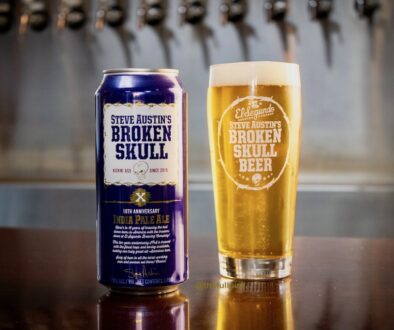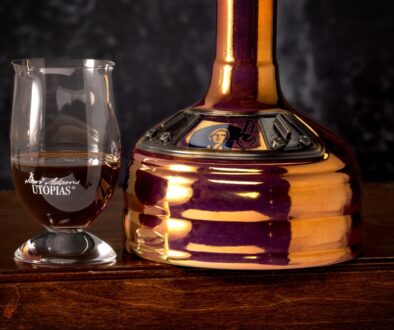Beer Lovers Make Room for Brews That Are Worth the Wait
 When Matthew VandenBerghe brings home his favorite beers, he doesn’t make room for them in the fridge. He takes them to his beer cellar.
When Matthew VandenBerghe brings home his favorite beers, he doesn’t make room for them in the fridge. He takes them to his beer cellar.
It’s a pitch-black basement room that stays 54 degrees year round. Sprayed concrete walls conduct the cool ground temperature while creating a cave-like appearance, and water he has had piped in drips down one side, both adding to the troglodyte effect and keeping the humidity between 60 and 70 percent.
Racks around the ceiling hold a few bottles of wine, but the shelves, which seem carved into the walls, mostly hold hundreds of bottles of beer that ages in the cellar, getting better over time.
“Every beer in there you could drink a year from now and it would be great,” said Mr. VandenBerghe, who owns Bottleworks Beer Store and Brouwers Café in Seattle. “But I’m planning to hold some for 20 to 25 years.”
A growing number of Americans practice the art of beer cellaring. In Europe, laying down brews isn’t seen as innovative; many beer stores have sections devoted to vintage beers.
But in the United States, a country with a preference for lagers, which lose flavor over time, most beer drinkers assume fresher means better.
For the most part, they’re right. Most beers were made to be consumed as soon as possible.
But certain types develop desirable flavors over time, like those with a high alcohol content, bottle-conditioned beers with yeast in the bottle, barley wines, lambics, barrel-aged and sour beers and winter ales.
Bill Sysak, a collector known as Dr. Bill among beer fans, boasts a collection that has hovered around 1,000 bottles for the past 20 years. His oldest are 30 to 40 years old, and he’s constantly searching for additions.
Like many collectors, Mr. Sysak operates informal cellars in different parts of his house, using a range of temperatures to control each beer’s aging.
A three-door cooler in his garage stays between 62 and 65 degrees — Mr. Sysak never turns it on — making it ideal for most beers he considers appropriate for aging: barley wines, Imperial stouts, strong ales and lambics.
As some of the lambics reach their peak, Mr. Sysak moves them to a vanity cabinet in a bathroom that fluctuates between 57 and 62 degrees, which slows the aging process.
Beers he’ll serve in the next six months, like India pale ales and lower-alcohol beers, go in cooler refrigerators that will retard aging and preserve freshness.

“For years I’d been stuffing beers into closets and corners of basements,” he said. “This was a chance to do it right.”
The tunnel, which Mr. Williams calls “rustic but with electricity,” burrows 3,000 feet into the mountain, and the temperature remains at 50 degrees. A natural stream runs through the passageway, introducing humidity into the dry mountain air.
The space now holds 3,000 to 4,000 bottles of beer, most of which have been donated by visiting brewers and friends.
Mr. Williams takes pride in his collection of somewhat obscure Nils Oscar beers from Sweden.
Mr. VandenBerghe says he’s cellared such memorable bottles as the Batch 1 Adam from Hair of the Dog, a 14-year-old ale from Portland, Ore., that’s 10 percent alcohol, and the Trappistes Rochefort 10, a Quadrupel Belgian ale that peaks around age 10.
Like most collectors, Mr. VandenBerghe cellars plenty of lambics, tart Belgian wheat beers that are made with wild yeasts and often fermented with fruit in casks. Over time, lambics become more approachable and less tart.
As a general rule for other varieties of beer, bitterness and dryness from the hops fade as they age, which allows malty characteristics to come to the forefront.
“You have to know your beer,” said Mr. Sysak, a 45-year-old emergency room worker in Orange County. “Even so, they’ll surprise you. Beers you know can heighten and loosen up over time might seem to be fading one year, but will become more vibrant the next.”
Mr. Sysak often finds duds that are corked or overly aged, with skunky, musty or overwhelmingly sour flavors.
“Just like with wine,” he says, “it can be hard to find that perfect moment.”
Recently he drank the last bottle from his 16 cases of the De Dolle Stille Nacht Reserva 2000, a Belgian dark strong ale with 12 percent alcohol.
Other memorable beers are Rodenbach Alexander, a low-alcohol Flanders red ale no longer in production; the 1987 Samichlaus Bier by the Hürlimann brewery in Zurich; and the 1996 Cantillon Kriek lambic, a “musty, funky, sweaty, bread-flavored cherry beer,” Mr. Sysak said.
He’s always searching for Thomas Hardy ales, a rare British barley wine that’s released in limited numbers and considered one of the best vintage beers for collecting.
Mr. Sysak once held a vertical tasting of Thomas Hardy ales from 1968, their first year, through 2004. It was just one of many extravagant tasting parties he has held to educate novices and share his stash with connoisseurs.
Historically, European brewers have been the ones intentionally making beers to be laid down. But increasingly, American craft brewers are doing the same.
Alan Sprints, owner of Hair of the Dog Brewing Company in Portland, Ore., says he opened the brewery 15 years ago to accomplish one specific goal: to create beers that improve with age.
Hair of the Dog’s first release, the Adam, remains a popular choice for cellaring. The next time Mr. Sprints sells an Adam from his first, and now dwindling, batch, he’ll ask $50 for one 12-ounce bottle.
Adam collectors can consult a vintage guide for the beer on the brewery’s web site, a new tool for the collector.
That knowledge can help preserve the best bottles in an extensive collection.
“I had 15 cases of a beer I bought 15 years ago, and now I’m down to the last few amazing bottles,” Mr. Sysak said. “It’s like seeing your child go off to college for the first time. You’re never going to get that moment again.”
source: The NY Times
By Lucy Burningham





June 27, 2008 @ 11:05 am
It all depends on the angle, and if it is corked or capped. If it’s corked, you want to stand it up, other wise, you could put it at an angle so the beer doesn’t touch the top.
June 27, 2008 @ 10:55 am
I noticed in the picture at the top that several beers are stored on their side, rather than standing. I have been told that his will ruin the beer. When is it ok to store the beer in the bottle horizontally, rather than vertically?